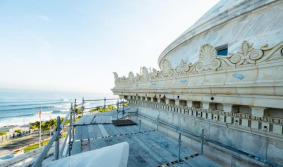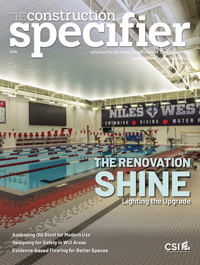How anchors stabilized Puerto Rico’s capitol facade

An internationally recognized anchoring system played a crucial role in the stabilization and preservation of the Capitol Building in San Juan, Puerto Rico. The system was key to reinforcing El Capitolio’s historic terracotta facade, helping safeguard one of the island’s most iconic architectural landmarks.
History and design
Construction of El Capitolio (the Capitol Building of Puerto Rico) began in 1925 in the neighborhood now known as “Old San Juan.”
The building contains two chambers, with the Senate on one side, the House of Representatives on the other, and an array of galleries, friezes, and mosaics in between. A vast marble staircase faces Ponce de Leon Avenue and gives access to the building to the south.
The building also features a round room in which Puerto Rico’s 1952 constitution is exhibited, which extends upwards to the three floors. The cornice adorns the base of the dome, which rises at the center of the building on an octagonal drum.
In 1998, an investigation revealed several major problems related to the ingress of large quantities of salt-laden moisture. The corrosion had been so severe that it was no longer possible to establish the exact dimensions of any of the former steel elements. Some had disappeared totally, leaving only rusty stains in the terracotta work. Severe cracking and movement of the corners were also evidence of a structural failure and deterioration.
Solution and outcome
It was recommended that all heavily damaged and collapsing areas of the cornice be dismantled and rebuilt using high-quality matching new units from a well-established terracotta manufacturer. To retain as much original material as possible, the undamaged but unstable areas of terracotta will be stabilized in situ using an anchoring system.
The meticulous drilling and insertion of the anchors into the facade was done with precision, ensuring the structural support was evenly distributed.
This targeted reinforcement not only strengthens the facade against potential damage but also preserves its visual and historical integrity, allowing El Capitolio to continue standing as a testament to its cultural legacy for generations to come.


